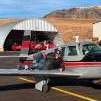ATC Altitude Reporting
-
Members Online
- N201MKTurbo
- 201Mooniac
- MikeOH
- philiplane
- ArtVandelay
- StevenL757
- icurnmedic
- flyingcheesehead
- Alpenglow Aviation
- glbtrottr
- Nico1
- amillet
- Shawn26
- hammdo
- TangoTango
- FoxMike
- M20S Driver
- Schllc
- DCarlton
- eman1200
- Utah20Gflyer
- alextstone
- FlyingDude
- Mooney-Shiner
- mooniac58
- Bondo
- jamesyql
- bluehighwayflyer
- Skyland


Recommended Posts
Join the conversation
You can post now and register later. If you have an account, sign in now to post with your account.